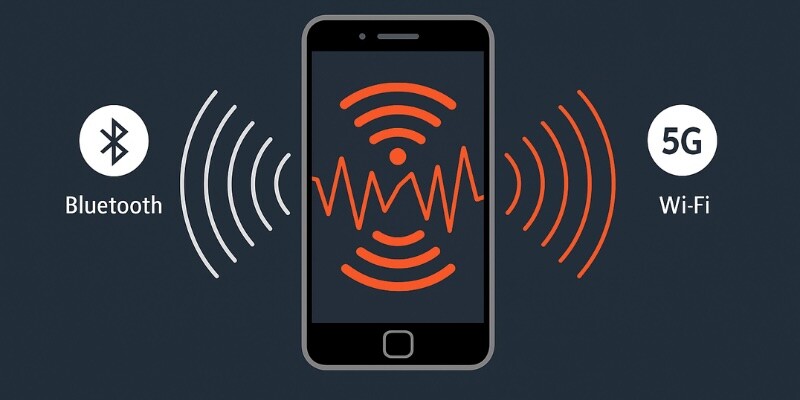
CE Compliance for Wireless Devices: Managing EMC for Bluetooth, Wi-Fi, and 5G
Without airtight wireless compliance, manufacturers risk failed product launches, hefty fines, and reputation-damaging product recalls — all while competitors move forward. As wireless capabilities become standard in everything from industrial control panels to advanced laboratory instruments, the regulatory landscape grows increasingly complex and unforgiving.
Unlike traditional electronic products, wireless devices must comply with both the EMC Directive (2014/30/EU) and the Radio Equipment Directive (RED, 2014/53/EU. Managing electromagnetic compatibility (EMC) in dense RF environments—where multiple radios operate simultaneously—poses unique challenges that require careful planning and execution.
Understanding CE Marking Requirements for Wireless Products
CE marking is a legal requirement for products sold within the European Economic Area (EEA). Wireless devices fall primarily under two directives:
-
EMC Directive 2014/30/EU: Covers electromagnetic emissions and immunity.
-
Radio Equipment Directive (RED) 2014/53/EU: Covers radio performance and EMC, among other aspects like health and safety.
For manufacturers, compliance ensures that devices operate reliably and legally, even in complex, data-intensive environments like labs and industrial settings.
Achieving CE compliance isn't just about passing a test—it's about ensuring operational reliability where wireless communication and precise control are mission-critical.
Pre-Approved Radio Modules: What You Need to Know
Many manufacturers integrate pre-certified radio modules into their designs to simplify wireless compliance. However, it's important to understand the scope and limits of such certifications:
-
In the U.S., radio modules are certified by a Telecommunication Certification Body (TCB).
-
In Europe, the certification process involves a Notified Body (NB) for RED compliance.
Using a pre-approved module can significantly reduce the complexity of wireless compliance. However, it does not guarantee full compliance for the host device. The integration must be evaluated for changes in RF exposure, antenna configuration, EMC emissions, and immunity.
Always review the module's Declaration of Conformity and reassess the complete device integration during CE marking preparation.

Common EMC Challenges for Bluetooth, Wi-Fi, and 5G Devices
Wireless devices face introduce unique EMC hurdles that, if not addressed early, can lead to failed tests and costly redesigns:
Co-location Interference
When multiple radios (like Bluetooth and Wi-Fi) operate simultaneously, intermodulation and desensitization can wreak havoc on signal integrity.
Antenna Design and Placement
Poor antenna placement near noisy digital circuits can seriously degrade both EMC and wireless performance.
5G-Specific Challenges
Advanced 5G features — including sub-6 GHz and mmWave bands, beamforming, and massive MIMO — introduce dense RF energy challenges that demand advanced EMC mitigation strategies.
Each of these factors must be evaluated through rigorous EMC testing and RF testing for wireless compliance to ensure the device remains compliant across all intended operating conditions.
Systems integrating IoT or edge computing components often encounter greater challenges, making early CE testing for IoT and edge devices critical to project success.
How to Achieve Seamless Compliance: Best Practices
Proactive and strategic planning dramatically increases the odds of first-time CE compliance success. Here are key practices:
-
Design Phase EMC Reviews: Integrate shielding, filtering, and grounding strategies early to prevent costly redesigns.
-
Module Integration Best Practices: Follow the radio module manufacturer's integration guidelines closely, especially regarding antenna type and placement.
-
Pre-Compliance Testing: Conduct pre-compliance testing early to identify and resolve issues before formal testing.
-
Documentation Readiness: Maintain detailed technical files, including EMC test reports, risk assessments, and Declaration of Conformity drafts.
Getting a head start with testing also helps avoid common pitfalls in CE testing, saving time and costly rework. By embedding EMC considerations throughout the product development lifecycle, manufacturers can avoid last-minute surprises and delays.

How GME Helps Manufacturers Navigate Wireless Compliance
At Green Mountain Electromagnetics (GME), we specialize in helping manufacturers of wireless products navigate CE and EMC compliance requirements.
Our services include:
-
Pre-Compliance EMC Evaluations: Identify potential risks upfront to save time and money.
-
Gap Analysis for Pre-Certified Modules: Confirm that module integration meets full system compliance.
-
Full EMC Testing Services for Wireless Products: Comprehensive services tailored to your product's specific wireless technologies.
With over 30 years of experience and a commitment to precision, affordability, and approachable service, GME is your trusted partner for wireless compliance.
Start Your Wireless Compliance Journey with Confidence
Navigating EMC requirements for Bluetooth, Wi-Fi, and 5G devices doesn't have to be overwhelming. With strategic planning, early testing, and expert guidance, achieving CE compliance can be a smooth and predictable process.
- Hundreds of manufacturers trust GME to simplify their wireless compliance journey.
- Protect your product’s launch timeline — and your company’s reputation.
- Partner with experts who speak your technical language.
Ready to simplify your CE compliance for your wireless device?
Schedule a Pre-Compliance Consultation with us today.